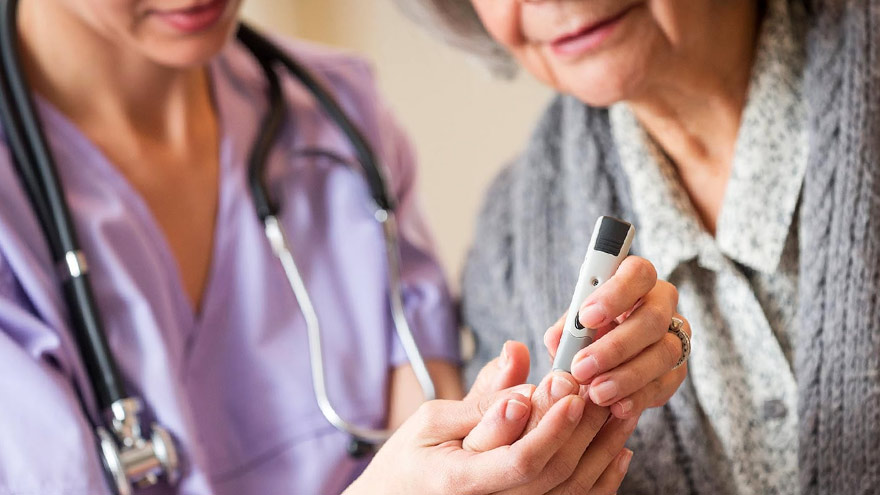Type 2 Diabetes: What You Should Know
August 29, 2022

What effect does diabetes have on the body? And who’s most at risk?
First, it’s important to know the difference between the two most common types of diabetes:
- Type 1 diabetes is the result of the body’s inability to make insulin, which is a hormone your body needs to be able to use sugar, or glucose, for energy. Type 1 is not preventable, and people who have it were either born with it or they developed it later in life due to an autoimmune process that attacked the pancreas that went unrecognized.
- Type 2 diabetes occurs when the body makes the insulin hormone, but it might not make enough or work well enough for the body to use sugar for energy. This is called insulin resistance. This condition usually develops later in life but is preventable with proper diet, exercise and weight loss. However, due to the obesity epidemic, type 2 diabetes is occurring more often in younger individuals.
Diabetes hurts the body’s ability to break down glucose, so rather than it being used for energy, glucose stays in the bloodstream, which can cause problems. But with early detection and the help of your doctor, diabetes can be managed so that complications are avoided. Left unmanaged, however, diabetes can affect major organs and lead to heart and blood vessel disease, nerve damage, kidney damage, eye damage, skin conditions and more.
Type 2 diabetes also results from risk factors that you can’t control, including your family history, race and age. However, there are a few risk factors that you can watch out for, such as being overweight, inactivity, diet choices, having high blood pressure and high cholesterol and triglycerides.
What are some of the most important things you can do to help prevent Type 2 diabetes?
Being overweight is one of the biggest risk factors for developing Type 2 diabetes, so healthy eating and physical activity are the two most important things you can do to prevent it. Maintaining a healthy lifestyle doesn’t just help you to maintain a healthy weight; it also helps control other risk factors such as high blood pressure and cholesterol levels. Studies show that losing 7% of your baseline weight can help reduce your chances of developing type 2 diabetes.
Getting used to healthier lifestyle choices can be tough to get used to, but if you set realistic and specific goals for yourself, these changes will decrease your risk. It’s important to keep in mind that even small changes can make a significant difference in preventing diabetes.
Adults should get at least 30 minutes of physical activity every day. If you’re just starting out, set a smaller goal like taking a 15-minute brisk walk in the morning and another 15-minute brisk walk in the evening. Finding an exercise buddy can help you stay more accountable to get in your daily movement.
In terms of eating healthier, it’s good to make small changes over time so that you’re more likely to stick with them. Try to fill your plate at mealtimes with veggies; small amounts of fruits; whole grains such as brown rice and quinoa; lean meats; low-fat dairy products; and a small amount of healthy fats, including avocado, olive oil and nuts or seeds. Try to minimize intake of processed foods like fast food, cereals and ready cooked or microwavable meals.
It’s not just about avoiding unhealthy foods - sugary drinks are often a big source of calories and sugar without offering the nutrients you need. So, make sure you’re drinking more water and limiting soda, sports drinks, energy drinks and sugary coffee drinks.
Finally, if you have been diagnosed with prediabetes, obesity or gestational diabetes (which is a form of diabetes present only during pregnancy), your risk for developing type 2 diabetes is higher. You can ask your health care provider about medications that may help delay or prevent the development of type 2 diabetes.
What are the signs and symptoms of diabetes?
People who have undiagnosed diabetes or prediabetes can experience the following symptoms:
- Tiredness
- Always feeling thirsty or hungry
- Frequent urination
- Blurry vision
- Numbness and/or tingling feet
- Slow-healing wounds
If you consistently experience these symptoms, make an appointment with your primary care physician.